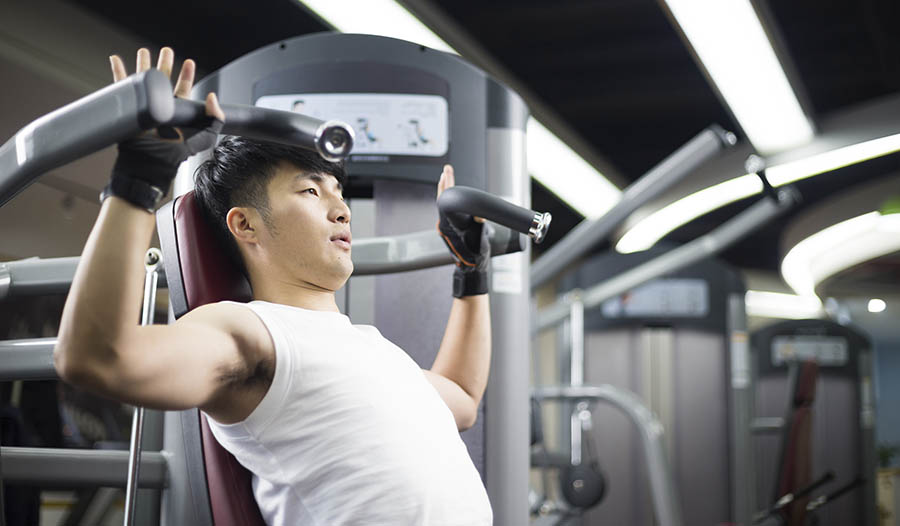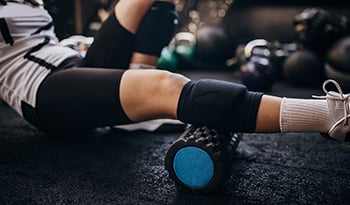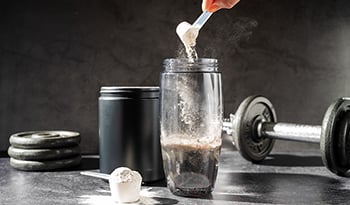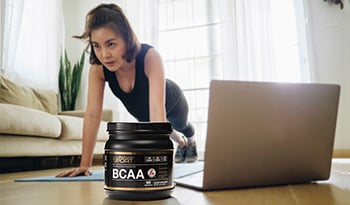Collagen, Joint Support and Working Out

Collagen has grown in popularity as a supplement for a variety of reasons and comes in multiple forms. It’s suggested that collagen positively benefits our skin, hair, tendons, and other fibrous tissues found throughout the body. Within our bodies, collagen can be found as one of the main structural proteins in our body’s fibrous connective tissue.
In fact, collagen is the most abundant protein in the body and will vary between 25-35% of our body’s total protein content. It can be found in the bones, cartilage, tendons, teeth, eyes, and hair, among other places on the body. There are multiple types of collagen that can be supplemented with, but the most common are type I and type II. The most common type of collagen throughout the body is Type I, which is primarily found in our skin, tendons, and bones. Type-II is found in the cartilage and is often sought out in supplement form for joint health.
Since collagen is so abundant in our bodies, it’s been suggested that supplementing with it can have positive benefits with multiple areas of our health. Though more research needs to be performed on this supplement before making definitive claims, some studies have shown promise.
Benefits of Collagen on Joint Health
One of the main reasons someone supplements with collagen for workouts is for the joint health benefits. As we age, exercise, and routinely put our body through stressful situations, our joints undergo stress, along with age-related wear and tear. Sometimes this wear and tear are inevitable and debilitating, but there are steps we can take to limit the amount our body undergoes, and one of those could be by taking collagen.
Research from 2009 looked at the differences between supplementation with type II collagen versus glucosamine and chondroitin (another popular joint supplement). The study authors were interested in how these two interacted with osteoarthritis in the knee, and if one was more effective than the other. They recruited 52 volunteers who were split into two supplement groups.
Volunteers took their respective supplements over the course of 90 days and came into the lab for assessments every 30 days following their initial assessment. Researchers performed a Western Ontario and McCaster Universities Osteoarthritis Index (WOMAC), which is an assessment used to gauge one’s pain and ability to move throughout multiple movements. Additionally, they performed a Lequesne Index test (questionnaire for osteoarthritis in the hip), and a Visual Analogue Scale (VAS), which is a measure of pain intensity.
After 90 days had finished, both supplement groups had reductions in all of the assessments, but the undenatured type-II collagen group had better scores across the board. Below are how all of the tests reduced a subject’s assessment scores upon the completion of 90 days.
- WOMAC: Type II Collagen 33% vs. Glucosamine & Chondroitin 14%
- VAS: Type II Collagen 40% vs. Glucosamine & Chondroitin 15.4%
- Lequesne Index: Type II Collagen 20% vs. Glucosamine & Chondroitin 6%
Both supplements proved to be advantageous for the study subjects, but the type II collagen scored slightly higher for supporting joint health and reducing pain associated with osteoarthritis.
As we age and put our bodies through stressful situations, it becomes increasingly important to undergo steps to assist in protecting and aiding the joints. Supplementing with collagen may be a useful tool for those interested in preventing joint degradation.
References:
- https://www.ncbi.nlm.nih.gov/pmc/articles/PMC2764342/
DISCLAIMER:This Wellness Hub does not intend to provide diagnosis...



























































































